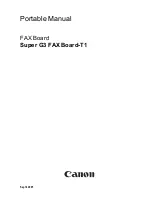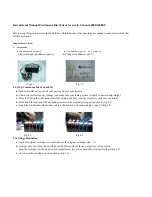
Glossary
Glossary-4
Operator Guide
BSC
binary synchronous communication. 1. Communication using
binary synchronous line discipline. 2. Uniform procedure using a
standardized set of control characters and control character
sequences for synchronous transmission of binary coded data
between stations.
buffer
Compartment of memory in which data is stored during transfer
from one device to another. This is useful for accumulating data
into blocks before storage or processing and for adjusting
differences of speed between devices, or between a device and
a communicating facility.
button
A one choice element of a control area or a menu. Buttons are
used to execute commands, display popup windows, and display
menus
Bypass Transport
Optional module that moves paper from the last stacker bin to a
finishing device.
byte
Fixed number of bits (in data processing, usually 8) operated
upon as a unit. A byte may represent a character, a machine
instruction, or some other logical unit of information.
cache
A small, fast memory area that holds the most active part of a
larger and slower memory.
carriage return
Control character that causes the printing system to start printing
at the left margin of the current line unless set to be interpreted
as a line end.
case sensitive
Treating lowercase and uppercase characters differently.
caution
A notice to the user that alerts to the safety information that will
prevent damage to the equipment or to a software file.
channel
1. In data communications, a path or line that enables two or
more devices to communicate (sometimes called a circuit,
facility, or link). 2. In computers, a path for communication
between the central processing unit (CPU) and input/output
units, or between the CPU and peripheral devices.
character
Single printable letter (A through Z), numeral (0 through 9),
symbol (& % #), or punctuation mark (, . ! ?) used to represent
data. Characters can also be nonprinting, such as space, tab, or
carriage return.
character cell
Digitized space containing a single character within a font set.
character code
Code representing alphanumeric information, for example,
ASCII.
character code
identifier
Code associated with the universal identifier “Xerox” to indicate
the version of the Xerox character code standard used to code
Interpress strings.
Содержание Nuvera 100
Страница 1: ...Xerox DocuPrint 100 115 135 155 180 EPS Operator Guide 701P21081 Version 3 7 July 2003...
Страница 8: ...Table of contents viii Operator Guide...
Страница 16: ...Safety xvi Operator Guide...
Страница 98: ...Managing the system 3 16 Operator Guide...
Страница 104: ...Maintaining the system 4 6 Operator Guide 3 Grasp the green handle on the fuser drawer and pull it out until it stops...
Страница 126: ...Maintaining the system 4 28 Operator Guide...
Страница 154: ...Troubleshooting 5 28 Operator Guide Figure 5 6 Area 4 Figure 5 7 Area 5...
Страница 155: ...Operator Guide 5 29 Troubleshooting Figure 5 8 Area 6...
Страница 156: ...Troubleshooting 5 30 Operator Guide Figure 5 9 Area 7...
Страница 160: ...Troubleshooting 5 34 Operator Guide Figure 5 12 Area 10 Figure 5 13 Area 11 all feeder stackers...
Страница 161: ...Operator Guide 5 35 Troubleshooting Figure 5 14 Area 12 all feeder stackers...
Страница 163: ...Operator Guide 5 37 Troubleshooting Figure 5 17 Area 15...
Страница 164: ...Troubleshooting 5 38 Operator Guide Figure 5 18 Area 16...
Страница 177: ...Operator Guide 5 51 Troubleshooting Figure 5 21 Paper curl chart...
Страница 186: ...UNIX security A 2 Operator Guide...
Страница 192: ...Supplies B 6 Operator Guide...
Страница 230: ...Glossary Glossary 38 Operator Guide...
















































